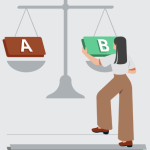Understanding Retirement Age in Canada: Key Insights for a Successful Post-Work Life

Choosing the right time to retire is one of the most important decisions in life. Whether you’re nearing the standard retirement age in Canada or thinking about retiring early, it’s crucial to know what options are available. In this guide, we will explore the retirement age in Canada, government benefits, and key factors to consider for a smooth transition to retirement.
What is the Standard Retirement Age in Canada?
The typical retirement age in Canada is 65, which also marks the age at which you become eligible for government retirement benefits, such as the Canada Pension Plan (CPP) and Old Age Security (OAS). However, it’s important to note that there is no mandatory retirement age in Canada, and retirement age can vary depending on personal and financial circumstances.
On average, Canadian women retire around age 64, while men tend to retire a bit later at 65. Interestingly, self-employed individuals often work longer than their counterparts in the public sector, with many continuing to work until 68.
Benefits at Age 65
When you reach 65, there are significant financial benefits available to you. Here’s a breakdown of the key government programs:
Canada Pension Plan (CPP)
CPP is a monthly payment for Canadians who have worked and contributed to the program. The amount you receive depends on how long and how much you’ve contributed. You can start receiving your CPP benefits as early as 60 or as late as 70, with your monthly payment adjusted accordingly.
- If you start at age 60, your monthly amount will be reduced by 0.6% per month, up to a 36% reduction.
- If you start at 70, your payments will increase by 0.7% per month, up to a 42% increase.
- Continuing to work while receiving CPP also allows you to earn additional contributions, increasing your post-retirement benefits.
Old Age Security (OAS)
OAS is a taxable monthly benefit for Canadians aged 65 or older who meet residency and legal requirements. The amount you receive is determined by your age, income, and the number of years you’ve lived in Canada after turning 18.
- For individuals aged 65 to 74, the maximum monthly payment is $718.33, subject to income limits.
- For those aged 75 and older, the amount increases to $790.16.
- If your income is below certain thresholds, you may qualify for additional allowances like the Guaranteed Income Supplement (GIS), which helps provide extra financial support.
OAS Allowances and GIS
- OAS Allowance: If your spouse or common-law partner receives the OAS pension, you might be eligible for the OAS Allowance, a non-taxable payment. The maximum monthly payment can be up to $1,364.17, depending on your income.
- Allowance for the Survivor: This is a monthly non-taxable payment for surviving spouses or common-law partners of individuals who passed away and are eligible for OAS. Payments can be as high as $1,626.20, based on income.
Estimating How Much You Need to Retire
Planning for retirement is more than just saving money; it’s about planning for a lifestyle. A recent study indicates that Canadians expect to need at least $1.7 million for a comfortable retirement. However, experts recommend saving at least 15% of your pre-tax income each year for retirement.
To determine how much you need, a retirement savings calculator can help you estimate the right amount, factoring in your desired retirement age and lifestyle.
7 Essential Principles for Successful Retirement Planning
To ensure a financially secure and fulfilling retirement, consider the following key principles:
- Start Early: The earlier you begin saving for retirement, the more you can benefit from compound interest. If you aim for an early retirement, keep in mind that it may impact the amount you receive from CPP and OAS.
- Know Your Needs: Canada’s average life expectancy is around 81 years. Understanding how long you need your savings to last is crucial. Use a retirement savings calculator to estimate how much income you’ll need to sustain your lifestyle.
- Maintain an Emergency Fund: Unexpected expenses can arise at any time, making an emergency fund essential. Having a financial cushion will help ensure that unexpected costs don’t derail your retirement plans.
- Prepare for Rising Healthcare Costs: Healthcare expenses can increase significantly as you age. It’s essential to factor these rising costs into your retirement planning to avoid financial strain in the future.
- Understand Your Social Security Benefits: Familiarize yourself with OAS, CPP, and GIS, as they are essential parts of your retirement income. Understanding these benefits will help you plan your finances better.
- Diversify Your Investments: Saving alone may not be enough to protect your purchasing power against inflation. A diversified portfolio—one that includes stocks, bonds, and alternative investments—can help ensure that your investments grow and outpace inflation.
- Minimize Taxes: Use registered accounts like TFSAs and RRSPs to ensure that your retirement savings grow tax-free or tax-deferred. This strategy will help you retain more of your retirement income.
Conclusion
The decision on when to retire and how to plan for it requires careful thought and consideration. In Canada, the standard retirement age is 65, but your ideal retirement age depends on several factors such as savings, pension plans, and personal preferences. By understanding your benefits and planning early, you can ensure a stable and enjoyable post-work life.


 English
English 












































































































































































































































































































































































